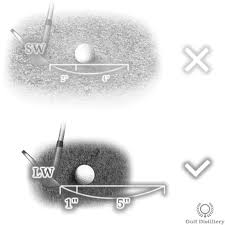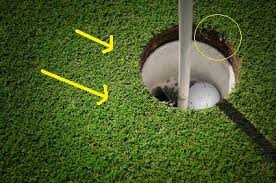We have all struggled with the bunker shots, especially when we are playing in a match where every stroke counts. A messed up shot on a fairway is a pain but 2 or 3 attempts to get out of a bunker is a real disaster. We all land in bunkers so wouldn’t it be fantastic if we knew that we could get out in our first attempt?
I was excited to watch a friend escape a bunker with a perfect swing. She had taken a lesson from a PGA Certified Instructor who showed her the ideal bunker escape shot:
1/ Using your sand wedge setup with an open stance and the ball in the center of your stance and weight slightly forward (on your leading foot).
2/ Wiggle your feet down about an inch into the sand for stability and to lower your swing depth in the sand.
3/ Open your club face so that the face points almost straight up from the sand (depending on the distance that you want your ball to fly). You still need to make a three-quarter to full swing and finish your follow-through.
4/ KEY POINT: Imagine a quarter placed in the sand beyond your ball. Your goal is to launch your ball, the imaginary quarter and sand on to the green. Depending on the distance you want to fly your ball take a three-quarter swing to power the head of your sand wedge under your ball and LAUNCH YOUR BALL & SAND (about 3 to 5 inches) BEYOND THE BALL ONTO THE GREEN.
Unfortunately after working on this method I would still leave about 30% of my bunker shots in the bunker.
Improved Solution

Amazing Discovery
I discovered that if I STARE AT A SPOT IN THE SAND ABOUT 1 INCH BEYOND THE BALL DURING MY SWING I can now make most of my bunker shots. I have never heard a pro recommend this trick. If I want to land my ball further across the green, I just focus on a spot about 2 or 4 inches beyond my ball.
After you try this revolutionary method out, I hope to hear from you. I realize that it’s difficult to change your focus from your ball to a point in the sand beyond your ball. Just drop a number of balls in a practice trap and feel the thrill of success before you take this trick to the course. Start enjoying your bunker play forever.
You still need to swing with a straight leading arm so practice this shot with your GOLFSTR+. Buy one today at www.GOLFSTR.com . Try out your new bunker shot and drop your comments in below.
Golf Truism #54: Golf balls are like eggs. They’re white, sold by the dozen and you need to buy fresh ones each week.












